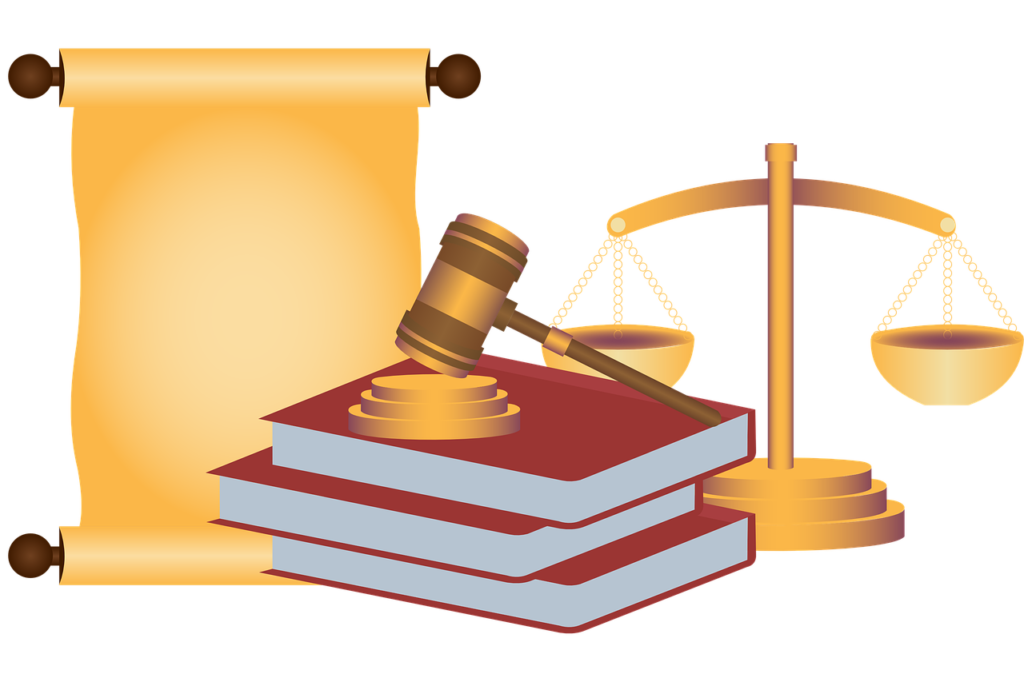Published On: 1st September, 2024
Abstract:
“WE THE PEOPLE OF INDIA” is the Preamble of India, which holds the basic features or basic structure of the Constitution. It states the aims and objectives of the Indian constitution and the ingredients that are sources and authority (we the people of India), the nature of the Indian state (Sovereign, Secular, Socialist, Democratic, Republic), objectives of the constitution (Justice, Liberty, Equality, and Fraternity). Supreme Court in Berubari Union Case [1] said that the preamble shows the general purpose behind several provisions of the constitution.
Through Article 13 of the constitution, the Judiciary makes sure that the basic structure of the Constitution shall not get amended as Article 13 Laws inconsistent with or in derogation of the fundamental rights.[2] declares that all laws that are inconsistent with or in derogation of any of the fundamental rights shall be void. Article 13 of the constitution is considered as the guardian of the Fundamental rights and the basic structure.
However, the Parliament with Article 368 has the power to amend the constitution and the use of the 9th schedule as it is immune from judicial review. So, there was a tug-of-war between the Judiciary and the Legislature for years and how with time how the Basic Structure of the constitution was secured in a positive and supportive way.
Introduction:
The Doctrine of Basic Structure is a key judicial principle established by the Supreme Court of India. It propounds that while parliament has the power to amend the constitution, it cannot alter or destroy its fundamental framework. This doctrine ensures certain core elements such as the supremacy of the Constitution the rule of law, the principles of separation of powers judicial review and the protection of fundamental rights remain inviolable. The Basic Structure Doctrine protects the Constitution’s essential characteristics. It guards against legislative overreach. This maintains integrity. It ensures the continuity of the democratic and constitutional order.
Origins and Evolution of the Doctrine:
- 1st Amendment (1951) – Shankari Prasad v. Union of India.[3]
The First Amendment to the Indian Constitution was enacted in 1951 with the aim of addressing various issues such as freedom of speech, land reform, and social justice. It brought about several important changes:
- Reasonable restrictions on freedom of speech: While the Constitution guaranteed the right to freedom of speech, the First Amendment introduced certain limitations on this right in order to maintain public order and protect the interests of the state.
- Article 31A: The state can take and declare any estate or corporation to be under them. In addition, the rights of the owner of the estate or corporation can be extinguished or modified by the Parliament. And after that to protect themselves, they added Article 31B.
- Protection for land reform laws: The Ninth Schedule was created (by adding Article 31B) as a means to safeguard land reform laws from being challenged in court. By including these laws in the Ninth Schedule, they were essentially shielded from judicial review.
Despite its significance, the constitutionality of the First Amendment was later questioned in the case of Shankari Prasad v. Union of India (1951). In this case, the Supreme Court upheld the amendment, stating that Article 13 only talks about ordinary laws and not amendments to the constitution, and hence the Parliament had the power to amend not only ordinary laws but also fundamental rights enshrined in the Constitution itself. This decision set an important precedent regarding the extent of authority possessed by Parliament when it comes to amending constitutional provisions, including fundamental rights.
- 17th Amendment (1964)
The 17th Amendment to the Indian Constitution, enacted in 1964, aimed to strengthen agrarian reforms by expanding the Ninth Schedule. The Ninth Schedule was originally created to safeguard land reform laws from being reviewed by the judiciary. This amendment introduced an additional 44 laws to the Ninth Schedule, providing protection to these laws against legal challenges based on infringement of fundamental rights. As a result, the 17th Amendment played a crucial role in facilitating the implementation of measures such as land redistribution and other agrarian reforms. Its objective was to ensure that landless farmers and marginalized communities could access fairer land ownership opportunities while also reducing the concentration of land in their hands.
It was then challenged in Sajjan Singh v. State of Rajasthan (1964) [4]
In the landmark case, the Supreme Court of India examined the legality of the 17th Amendment. Sajjan Singh, the petitioner, contested this amendment on the basis that it violated basic rights. With a 5 judges’ bench, in a 3-2 majority ruling, the Supreme Court upheld the constitutionality of the 17th Amendment. This decision reaffirmed previous judgments in Shankari Prasad v. Union of India and Sajjan Singh v. State of Rajasthan, which established that Parliament possessed the authority to modify any portion of the Constitution, including fundamental rights, under Article 368. This case played a crucial role in shaping discussions about striking a balance between constitutional amendments and safeguarding fundamental rights.
The 17th Amendment was again challenged in the case of Golaknath v. State of Punjab (1967) [5] The Supreme Court of India delivered a pivotal judgment concerning the extent of Parliament’s power to amend the Constitution particularly fundamental rights The petitioners, the Golaknath family challenged the validity of several constitutional amendments that sought to curtail their property rights. In a historic decision, the Supreme Court ruled by a narrow majority (6-5) that Parliament could not amend fundamental rights enshrined in the Constitution. The court invoked the doctrine of prospective overruling. It stated that any future amendments infringing on fundamental rights would be invalid. This judgment marked a significant shift from previous rulings in Shankari Prasad v. Union of India. The court had upheld Parliament’s unrestricted amending power in these cases. The Sajjan Singh v. State of Rajasthan case followed a similar stance. Golaknath thus set the stage for the development of the Basic Structure Doctrine. This doctrine would be articulated in the subsequent Kesavananda Bharati case.
- 24th Amendment (1971)
The 24th Amendment to the Indian Constitution enacted in 1971, was a response to the Supreme Court’s ruling in Golaknath v. State of Punjab (1967). This ruling restricted Parliament’s power to amend fundamental rights. The amendment sought to restore and clarify Parliament’s authority to amend any part of the Constitution. This included fundamental rights. It explicitly amended Article 368 to state that Parliament has the power to amend the Constitution. No such amendment can be called into question in any court. Additionally, it amended Article 13. It added Article 13(4) which stated that nothing in this article shall apply to any amendment of this constitution made under Article 368; and with that an addition of Article 368(3) which speaks about how nothing in Article 13 shall apply to any amendment made under this article. This exempted amendments from judicial review on the grounds of violating fundamental rights. The 24th Amendment thus reaffirmed parliamentary sovereignty in constitutional amendments. It set the stage for future judicial battles over the balance of power between the legislature and the judiciary.
- Soon after the 24th Amendment, the 25th Amendment (1972) came into He introduced Article 31C which aimed to protect laws implementing certain policies from challenge on the basis of infringement of fundamental rights, particularly property rights under Articles 14, 19, and 31. Any law containing a statement implementing such a policy could be challenged in any court on the grounds of not implementing such directives. Further, Article 31(2) replaced the word “compensation” with “amount” to allow the state to determine compensation for property acquired without judicial review. Thus, the 25th Amendment reflected the government’s intention to prioritize social justice and equality over individual property rights and was intended to prioritize policies over fundamental rights in certain circumstances, particularly to promote socio-economic reforms and land redistribution. ¬ 26th Amendment: The 26th Amendment brought about a major change in the political and social landscape of India by abolishing the private funds and privileges of the erstwhile princely states. ¬ 29th Constitutional Amendment: This amendment added Kerala’s two land reform laws to the Ninth Schedule of the Constitution, protecting them from judicial review on the grounds of violation of fundamental rights. Specifically, these were the Kerala Land Reforms (Amendment) Act, 1969, and the Kerala Land Reforms (Amendment) Act, 1971. The main objectives of these Acts were to redistribute land in favour of landless and marginal farmers and ensure more equitable land tenure and rights, and to reduce socio-economic inequalities in rural areas. The Twenty-Ninth Amendment sought to protect these Acts from repeal by the courts by including them in the Ninth Schedule, thereby reaffirming the government’s commitment to land reform and social justice.
- These Amendments were finally challenged in the landmark case Kesavananda Bharti v. State of Kerela (1973) [6]
The case of Kesavananda Bharti v. State of Kerela is a landmark case dated on 24th April 1973, this case had a significant impact on constitutional law in India. It introduced the concept of the Basic Structure Doctrine and set important precedents regarding the power of Parliament to amend the Constitution. The case originated from a challenge against certain constitutional amendments that aimed to restrict judicial review powers and narrow down fundamental rights. The key issue at hand was whether Parliament could use its amending power to modify the “basic structure” of the Constitution.
In a momentous ruling, the Supreme Court, headed by Chief Justice Sikri and a narrow 7-6 majority, declared that while Parliament had the authority to amend the Constitution, it did not have the power to alter its basic structure, it upheld the validity of the amendment and confirmed that parliament can amend the constitution but except the Basic Structure. So in Article 31C the part of the 25th Amendment which says that ‘no law containing a declaration for giving effect to such policy shall be questioned in any court’ was declared unconstitutional, because it was in contravention of the Basic Structure as it was resisting judicial review. The court explained that certain fundamental principles, such as constitutional supremacy, the rule of law, judicial review, separation of powers, and the protection of fundamental rights, constitute this basic structure which cannot be undermined through constitutional amendments.
The judgment in Kesavananda Bharati v. State of Kerala laid the foundation for what is now known as the Basic Structure Doctrine. This doctrine acts as a safeguard against arbitrary amendments and excessive legislative actions, ensuring that India’s constitutional framework remains stable and consistent. Over the years, the Basic Structure Doctrine has played a crucial role in protecting constitutional principles from violation. It has been invoked in numerous subsequent cases as a means to uphold the integrity of the Constitution and prevent any dilution of its core features. The Kesavananda Bharati case stands as one of the most influential and enduring contributions to Indian constitutional jurisprudence. Its impact extends far beyond its immediate context, shaping the understanding and interpretation of constitutional law in India for decades.
When in 1975 the Allahabad High Court found the then Prime Minister guilty of electoral malpractices and while the apple was pending in the supreme court Indira Gandhi’s government declared an emergency and added 39ththe Amendment. The 39th amendment added Article 329A which took away the court’s powers to try electoral disputes relating to the election of the President, Vice President, Prime Minister, and speaker of Lok Sabha.
Core Elements of the Basic Structure Doctrine
Supremacy of the Constitution: The Constitution is the supreme law of the land, and all laws and actions of the government must conform to it.
Rule of Law: All individuals and institutions are subject to and accountable under the law.
Separation of Powers: Division of governmental powers into distinct branches (executive, legislative, and judicial) to prevent the concentration of power.
Judicial Review: The judiciary’s power to review and invalidate laws and actions of the executive and legislature that contravene the Constitution.
Secularism: The state’s neutrality and impartiality towards all religions, ensuring freedom of religion and non-discrimination.
Federalism: The division of powers between the central government and regional governments, allowing for regional autonomy within a unified national framework.
Democracy: Representative government, including free and fair elections and the protection of democratic processes and institutions.
Fundamental Rights: Protection of individual rights and freedoms essential for human dignity and democratic governance.
- The 39th amendment was challenged in Indira Gandhi v. Raj Narain (1975) [7]
This was the first landmark judgment in which Kesavananda Bharti’s case judgement was applied by the supreme court. It declared the newly added 329A clause 4as unconstitutional because it violated the basic structure of the constitution.
After this judgement, the 42nd amendment (1976) was made and it added Articles 368(4) and 368(5) which conferred unlimited amending power to the parliament and Article 31C was amended again.
- The 42nd amendment was challenged in Minerva Mills v. UoI and ors. (1980)[8]
This case finally upheld the concept of the Doctrine of Basic Structure and it held that the amending power of the parliament can’t be unlimited, limited amending power is in itself part of the Basic Structure of the constitution. It also declared 368(4) and 368(5) unconstitutional because it is taking away the power of the judiciary to conduct judicial review which is a basic feature of the constitution, Article 31C was also restored to the pre-1976 position.
- Woman Rao v. Union of India (1980) [9]
Through this judgement, a five judges bench declared that the Basic Structure Doctrine is applicable prospectively and not retrospectively.
It was held that any law put in the 9th schedule after 24th April 1973, that is the date of forming of Basic Structure through the judgement of the Kesavananda Barti case, shall be under the preview of judicial review.
Conclusion:
The Basic Structure Doctrine is a fundamental principle of constitutional law that has had a major impact on the legal and political systems in India. Its main purpose is to protect the core principles of the Constitution and prevent any potential dangers to constitutional democracy. Despite receiving some criticisms and being involved in controversies, the doctrine still plays an essential role in preserving the strength and consistency of the Indian Constitution. As democratic societies develop over time, the Basic Structure Doctrine will remain crucial in preventing the weakening of key constitutional principles.
Reference(s):
[1] ‘In Re: The Berubari Union And Exchange Of … vs Unknown on 14 March, 1960’ <https://indiankanoon.org/doc/1120103/> accessed 5 July 2024.
[2] ‘COI…Pdf’ <https://lddashboard.legislative.gov.in/sites/default/files/COI…pdf> accessed 5 July 2024.
[3] ‘Sri Sankari Prasad Singh Deo vs Union Of India And State Of Bihar(And … on 5 October 1951’ <https://indiankanoon.org/doc/1706770/> accessed 5 July 2024.
[4] ‘Sajjan Singh vs State Of Rajasthan(With Connected … on 30 October 1964’ <https://indiankanoon.org/doc/1308308/> accessed 5 July 2024.
[5] ‘I. C. Golaknath & Ors vs State Of Punjab & Anrs.(With Connected … on 27 February 1967’ <https://indiankanoon.org/doc/120358/> accessed 6 July 2024.
[6] ‘Kesavananda Bharati Sripadagalvaru … vs State Of Kerala And Anr on 24 April 1973’ <https://indiankanoon.org/doc/257876/> accessed 6 July 2024.
[7] ‘Indira Nehru Gandhi vs Shri Raj Narain & Anr on 7 November, 1975’ <https://indiankanoon.org/doc/936707/> accessed 6 July 2024.
[8] ‘Minerva Mills Ltd. & Ors vs Union Of India & Ors on 31 July 1980’ <https://indiankanoon.org/doc/1939993/> accessed 6 July 2024.
[9] ‘Waman Rao And Ors vs Union Of India (Uoi) And Ors. on 13 November, 1980’ <https://indiankanoon.org/doc/1124708/> accessed 6 July 2024.



